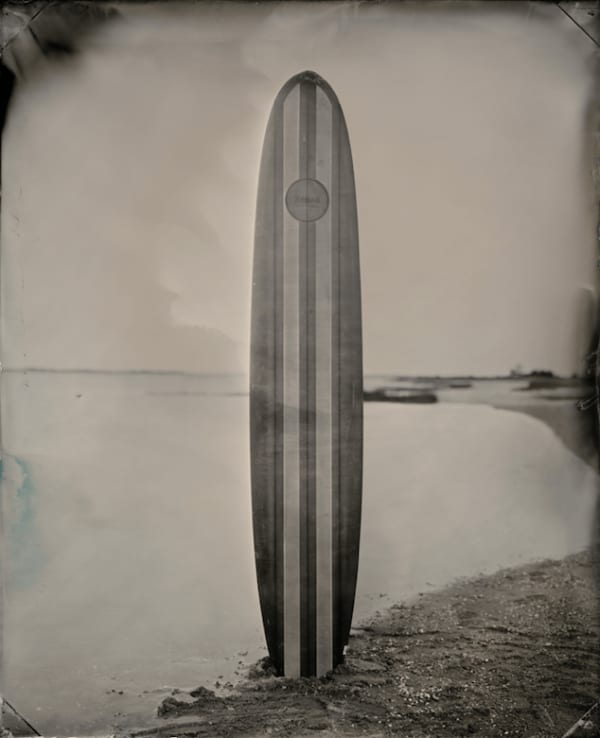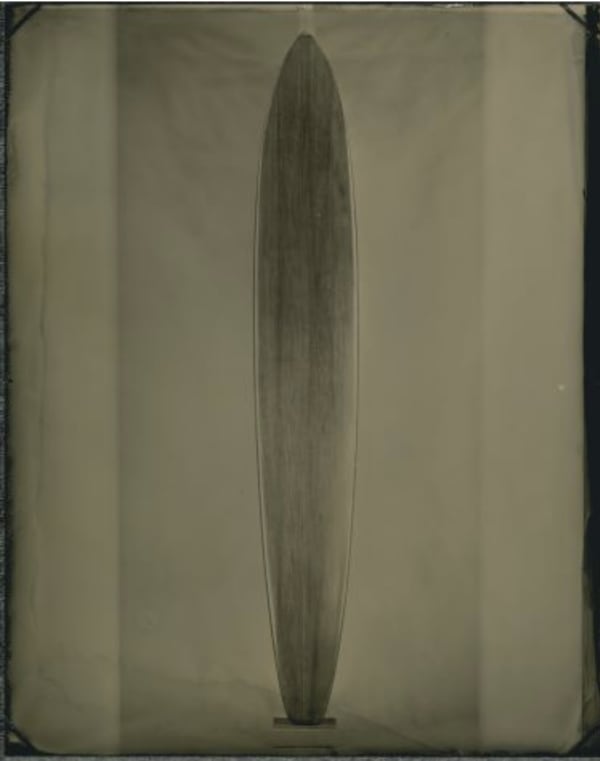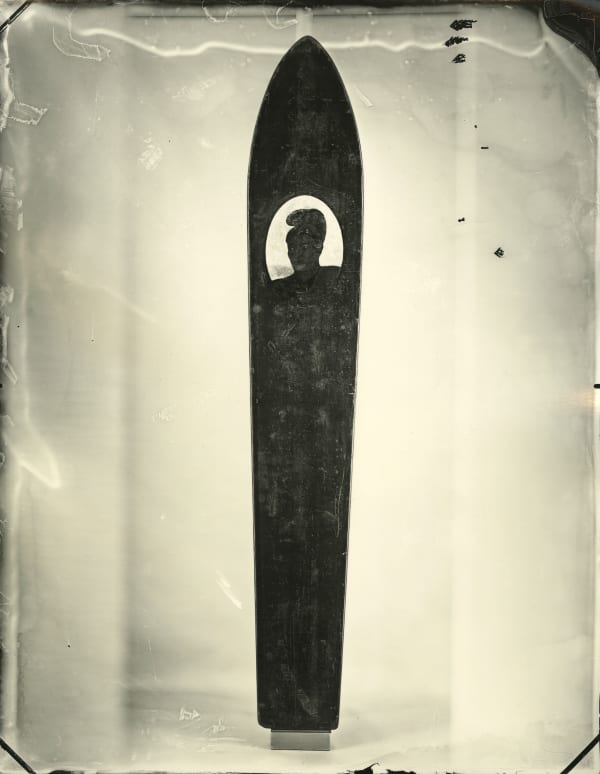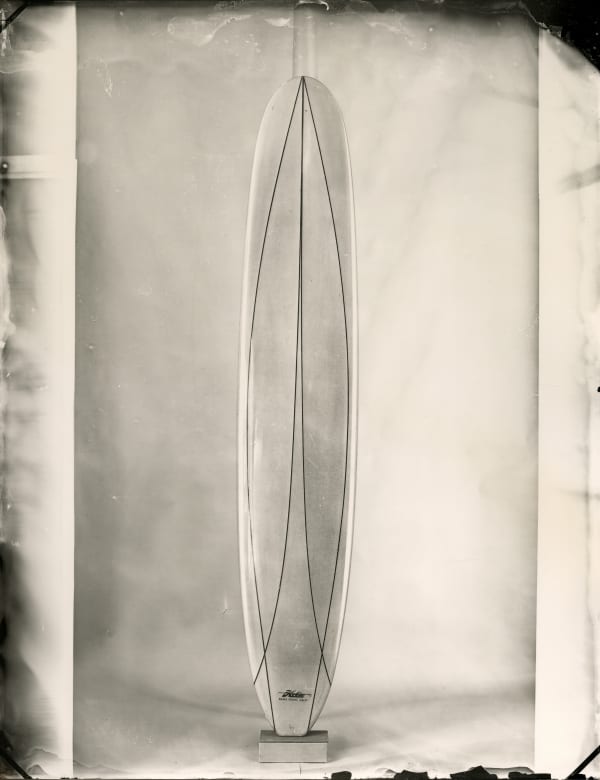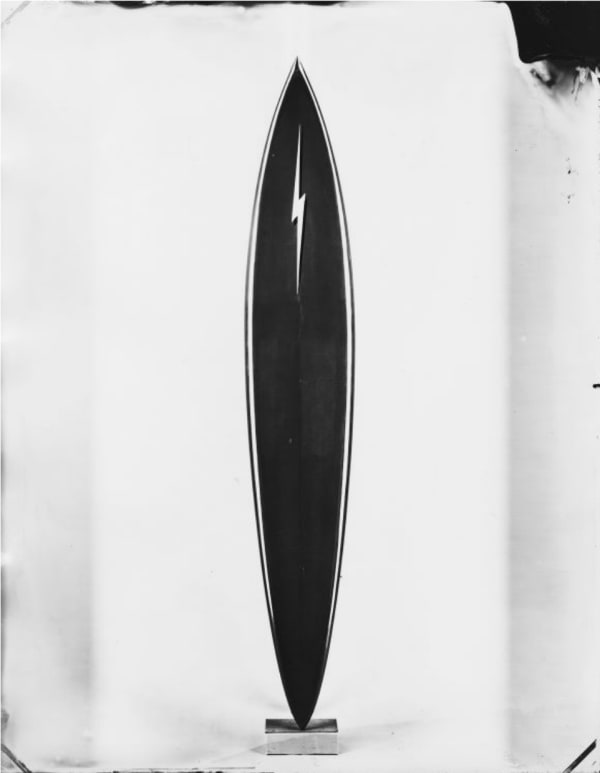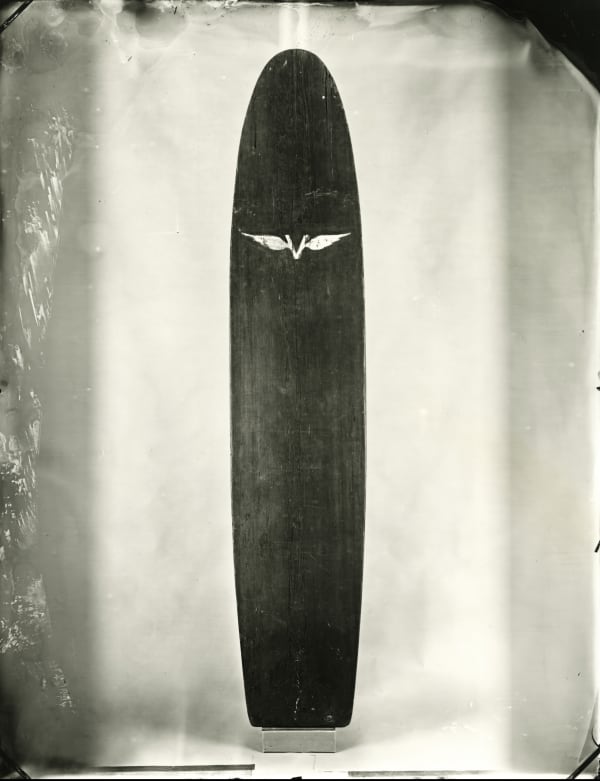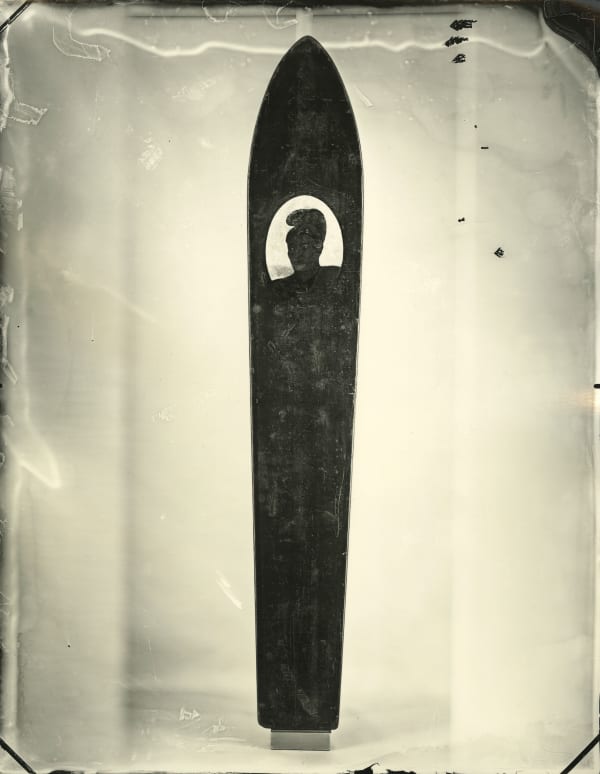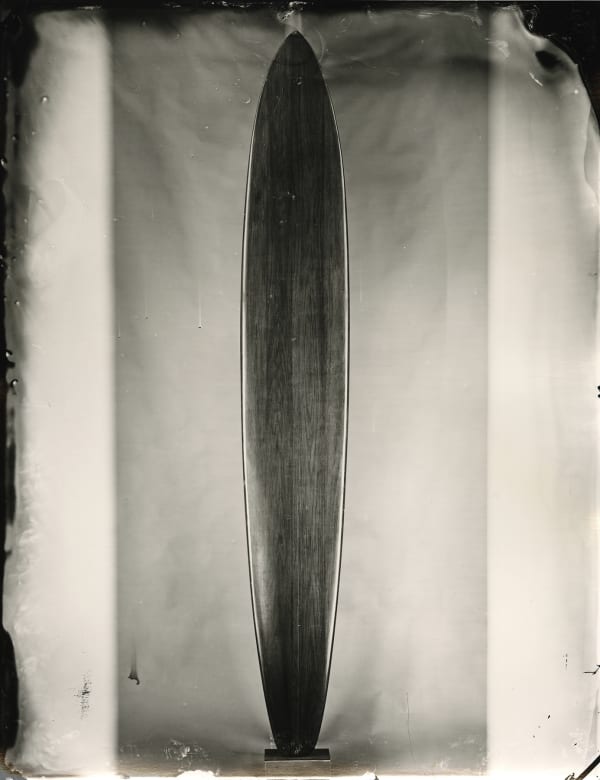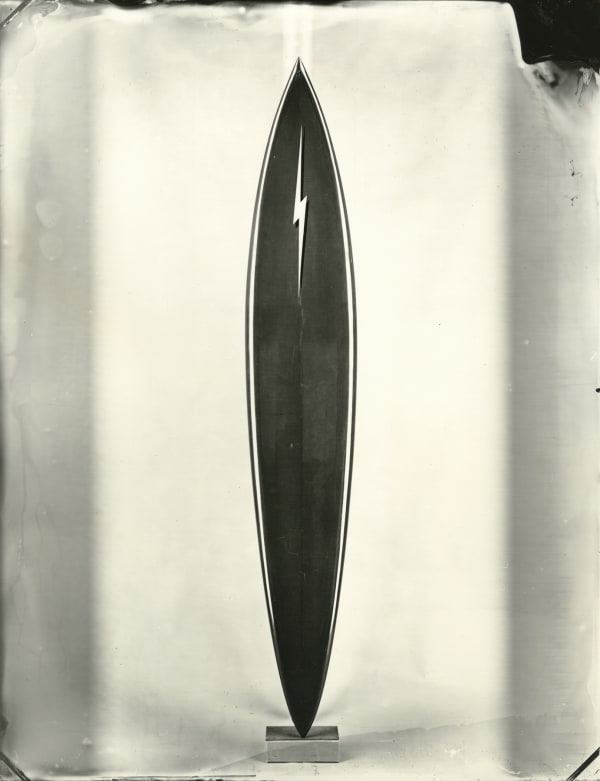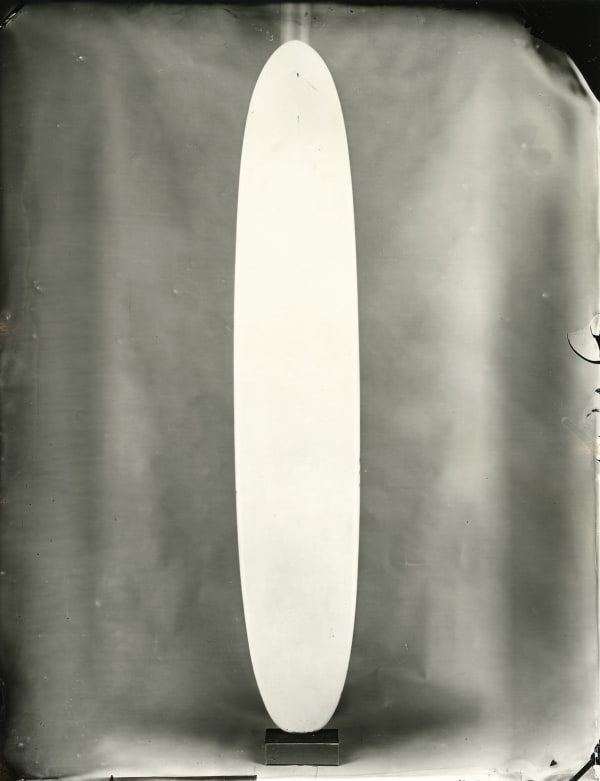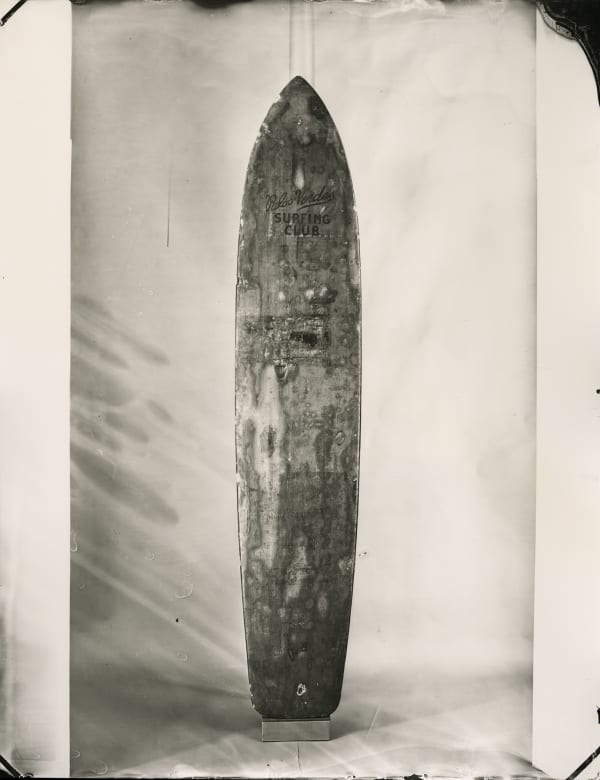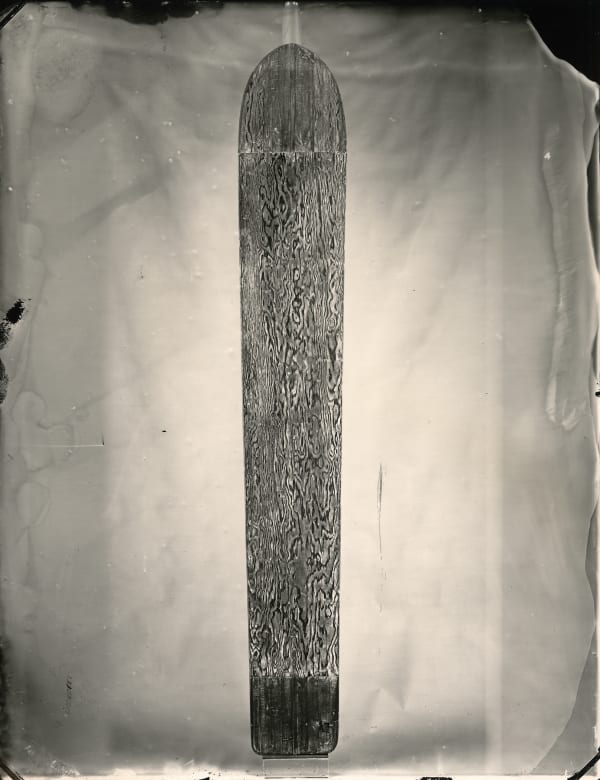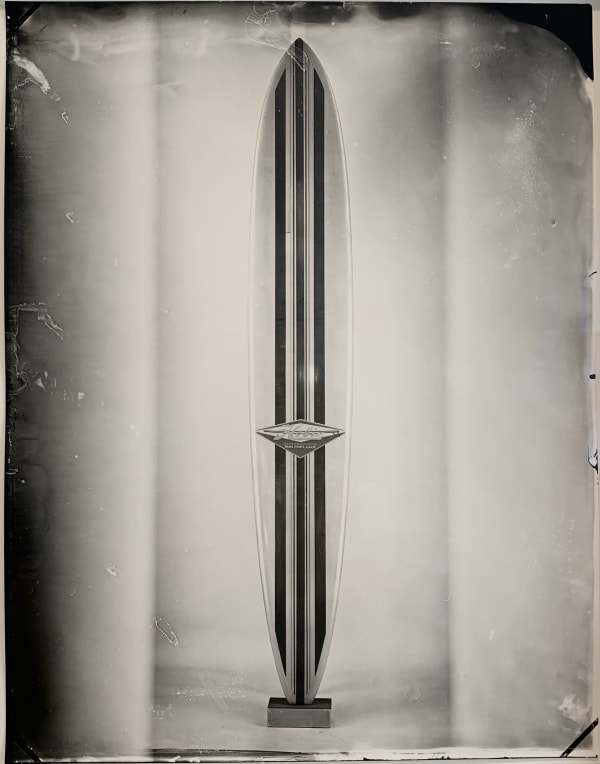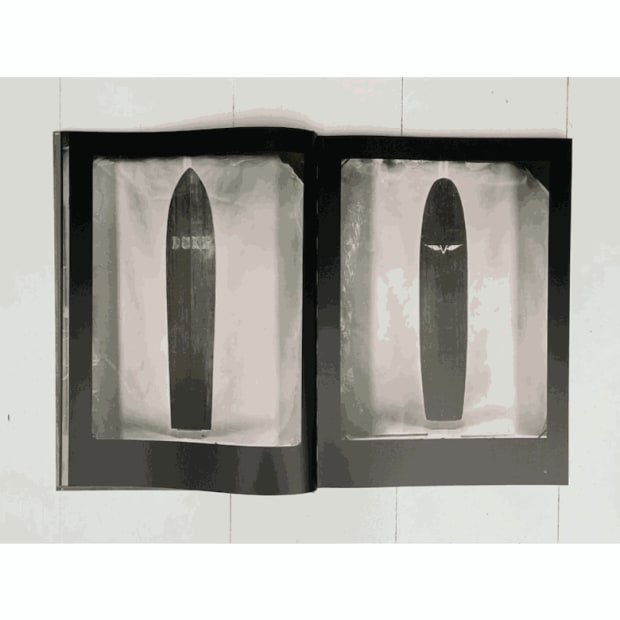-
SURFBOARD
Joni Sternbach -
Sternbach refers to this quality as "totemic," and they do inspire a certain reverence. Especially when clustered together on the beach, they become an altar to the ocean.
In 1839, the very first portrait photograph was captured of (and by) Robert Cornelius. It must have been a difficult - albeit likely humorous - process, as Cornelius set up his camera before hurriedly running to sit motionless in front of it, arms crossed and hair tousled. To go to such an effort demonstrates the essential connection between portraiture and photography. They've been attached to one another from the beginning. Moreover, portrait photography is more important and accessible to the public in ways Cornelius could never have imagined. But in Joni Sternbach's newest body of work "Surfboard", we see the oldest techniques of photography implemented in the capturing of a different kind of portrait.
As the title of the show suggests, "Surfboard" continues Sternbach's ongoing "Surfland" series by capturing surfing culture through the use of tintype and silver-gelatin photographs. However, unlike her previous works, there are no actual surfers in the show at all. Instead, Sternbach photographs a wide array of boards, from weathered and beaten Hobies to modern fiberglass boards. The boards act as canvases themselves, showing not only the scars of their use but also elaborately painted designs like those in #2 Lightning Bolt and #5 Skeleton.
While a surfboard in the abstract is a utilitarian item of sport and leisure, under Sternbach's careful eye and expert photographic skills, the boards take on an entirely new quality. Sternbach refers to this quality as "totemic," and they do inspire a certain reverence. Especially when clustered together on the beach, they become an altar to the ocean.
And by giving these boards the dignity that such a laborious process as tin-type prints require, Sternbach glorifies the craft itself. One can take a moment to appreciate the gently sloping curves and precise symmetry of the boards, as well as the varied decorative elements. The care and talent with which these boards were created shines through in Sternbach's work. It's fitting that the only bit of an actual human being captured in Sternbach's many portraits are two hands in #6 Hobie with Hands, clutching a board to hold it upright, as if to say "These crafted this."
-Cole Sweetwood, "Pick of the Week", Artillery, published 2 December 2020
-
-
 19.02.12 #9T Lightning BoltView more details
19.02.12 #9T Lightning BoltView more details -
 20.09.24 #8 Blue BahneView more details
20.09.24 #8 Blue BahneView more details -
 16.08.18 #1 Present FutureView more details
16.08.18 #1 Present FutureView more details -
 18.09.18 #1, Orange Lightning BoltView more details
18.09.18 #1, Orange Lightning BoltView more details
-
-
Joni Sternbach's SURFBOARD
presented by Black Box ProjectsBlack Box Projects is delighted to present its first solo exhibition of photographs by Joni Sternbach in the United Kingdom, taken from her most recent series SURFBOARD.
Over the last twenty years, Sternbach has worked with large format cameras and early photographic processes to explore how we observe, relate to and interact with the earth's oceans. For her current exhibition she digs deeper, concentrating on the vessel designed for ocean voyage - the surfboard. Surfboards, through Sternbach's careful eye, are presented as remarkable examples of functional design and the SURFBOARD series tells a compelling story of a critical American art form. While surf pictures are traditionally studies of motion, by turning her camera away from the ocean and instead focusing on the utilitarian tools of the surfer, we discover an ethnographic study in stillness, portraits captured in a silvery and antiqued timelessness.
SURFBOARD is a celebration and impassioned study of some of the most important designs in surf history. These sculptural totems reflect culture and class, echoing the politics of their time. Sternbach uncovers layers of meaning, historical and cultural clashes, as well as celebrates the visual pleasure of the surfboard and its origins. Capturing the spirit of these totemic boards, Sternbach suggests a modernist sculptural presence in her surfboard portraits. Through this new body of work, Sternbach deftly draws connections between materials, objects and human experience.
SURFBOARD is presented as limited-edition silver-gelatin photographs from ultra large-format wet collodion glass negatives as well as large-scale archival pigment prints. For this exhibition we will also have a limited selection of unique tintype photographs from Sternbach's acclaimed series Surfland. The exhibition is accompanied by a limited-edition artist's monograph of the same title, available exclusively through Black Box Projects.
-
Small surfboard editions
INSTALLATION VIEW /
Joni Sternbach
SURFBOARD
14 silver gelatin prints
Framed in handmade white box frame with museum glass
Signed, numbered and dated in pencil by the artist on print verso
Limited edition of 8 + 2 artist proofs
14 x 11 inches (35.6 x 27.6 cm) print size, each
41.4 x 34 cm framed size each
93 x 286.2 cm total size as installation
Please contact gallery for pricing and availability.
-
Individual surfboard editions
-
-
For prices, availability and full details of Joni Sternbach's Surfboard series, please reference the exhibition list.
Please do contact Black Box Projects with any questions or if you would like to arrange an appointment to view works from the Surfboard exhibition or other pieces from our Joni Sternbach gallery collection.
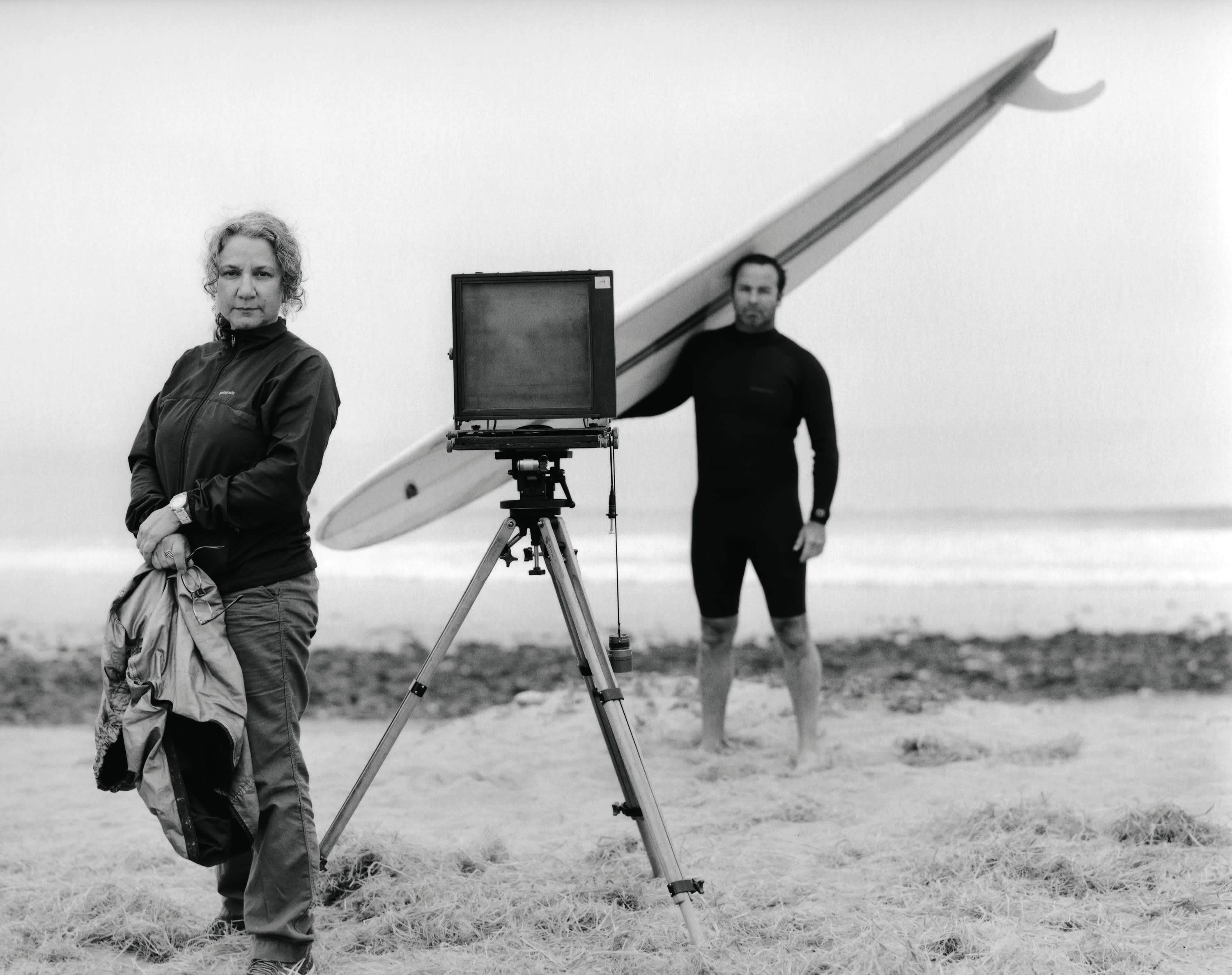
Joni Sternbach has spent over a decade creating portraits of surfers on beaches around the world. Surf pictures are traditionally studies of motion, instead with Sternbach's work we discover an ethnographic study in stillness, portraits captured in a silvery and antiqued timelessness.
In her Surfland and Surfboard series, Joni Sternbach works exclusively with large-format antique cameras to create unique tintypes; a process that dates back to the origins of photography and is equally as cumbersome and fickle of a practice as when it was first invented. The wetplate collodion process is a difficult and time-consuming technique that involves coating a metal plate with liquid chemicals, immediately exposing an image onto it whilst the chemicals are still wet and developing it immediately. Sternbach calls this method 'the Polaroid of yesteryear.' This technique is difficult enough to master within the setting of a studio equipped with a darkroom. Sternbach instead shoots on beaches, exposed to the temperamental elements of the wind, sand and salt and develops her tintypes in a make-shift darkroom on site.
There is a performance and spectacle associated with Sternbach's process. Shooting long-exposures with a bulky and heavy antique camera, setting up her elaborate equipment on the beach, taking the picture and developing it in public, she is under observation at all times. Sternbach comments that within her work, 'it's this curious combination of artistry, technique, puppet show and performance, all on the beach.'
The resulting portraits are ethereal - surfers and their boards captured as free spirits in timeless silence - the historic process of tintype linking these individuals to adventurers and ocean-goers both past and future.




